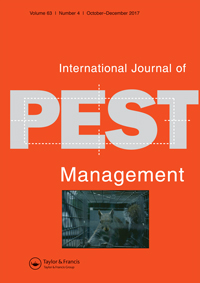Ver ítem
- xmlui.general.dspace_homeCentros Regionales y EEAsCentro Regional Patagonia NorteEEA BarilocheArtículos científicosxmlui.ArtifactBrowser.ItemViewer.trail
- Inicio
- Centros Regionales y EEAs
- Centro Regional Patagonia Norte
- EEA Bariloche
- Artículos científicos
- Ver ítem
Ecology of the woodwasp Sirex noctilio : tackling the challenge of successful pest management
Resumen
The invasive woodwasp Sirex noctilio has become one of the most significant pests of pine forests throughout the northern and southern hemispheres. In Patagonia (southern Argentina), S. noctilio was first detected in the early 1990s. However, in less than two decades, and despite intensive control efforts, populations have spread, and outbreaks have been observed. In this paper, we outline and define several key ecological and behavioral features of S.
[ver mas...]
The invasive woodwasp Sirex noctilio has become one of the most significant pests of pine forests throughout the northern and southern hemispheres. In Patagonia (southern Argentina), S. noctilio was first detected in the early 1990s. However, in less than two decades, and despite intensive control efforts, populations have spread, and outbreaks have been observed. In this paper, we outline and define several key ecological and behavioral features of S. noctilio (namely, spatiotemporal population dynamics, phenology and dispersal) and briefly discuss their implications for the design, implementation and evaluation of local and regional management strategies. We argue that limited information on pest ecology and the extrapolation of control measures without local adaptation may together have affected management success. We conclude that efforts directed to understanding of pest ecology and life-history traits as expressed in specific invaded habitats may help us improve our competence in controlling invasive forest insects.
[Cerrar]

Fuente
International journal of pest management 58 (3) : 249–256. (July–September 2012)
Fecha
2012-08
ISSN
0967-0874 (Print)
1366-5863 (Online)
1366-5863 (Online)
Formato
pdf
Tipo de documento
artículo
Palabras Claves
Derechos de acceso
Restringido
 Excepto donde se diga explicitamente, este item se publica bajo la siguiente descripción: Creative Commons Attribution-NonCommercial-ShareAlike 2.5 Unported (CC BY-NC-SA 2.5)
Excepto donde se diga explicitamente, este item se publica bajo la siguiente descripción: Creative Commons Attribution-NonCommercial-ShareAlike 2.5 Unported (CC BY-NC-SA 2.5)

